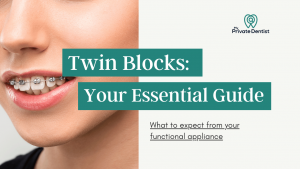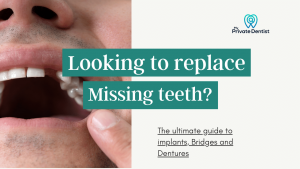These are my recommendations for the best temporary filling kits.
As a dentist, I know that dental emergencies can happen at any time, and it’s not always possible to get professional help right away. Whether you’re travelling, living in a remote area, or simply unable to see a dentist immediately, having a temporary filling kit on hand can help you manage many dental issues that may arise.
A temporary filling kit is a set of materials that you can use to temporarily fill a cavity or repair a broken tooth, until you are able to see your dentist.
Too often, these products have bad reviews. Delving in to this, I have found that poor ratings are often because the products have been used inappropriately, and therefore failed. In this article, I will explore some of the best temporary filling kits available on the market, with a focus on materials and the best way to use them successfully.

Overall, I recommend the Micron Temporary Filling Kit. It contains a strong, wear-resistant material that is commonly used by dentists to fill and repair broken teeth. It bonds well to teeth, but must be mixed accurately and placed carefully to avoid issues.
By choosing the correct temporary filling kit for your specific problem, you can make your tooth more comfortable and less sensitive, whilst waiting for professional care.
Read on to see all our recommendations for the best temporary filling kits.
IMPORTANT NOTE:
Temporary filling kits can provide temporary relief from tooth pain and discomfort. However they are NOT intended as a permanent solution. It’s important to seek professional dental care to ensure that any dental issues are properly addressed and to prevent further damage to your teeth.
Our 6 Top Picks
Best Overall Temporary Filling Kit – Micron
Best Travel Temporary Filling Kit – Dentek Temparin
Best No-Mix Syringe – Life
Best Temporary Filling Kit for Chipped Front Teeth – Dental Bandage
Best Temporary Filling Kit for Sensitivity – Cimadent
Best for Lost Crowns, Veneers and Onlays – Tempolat C
Why Do Temporary Fillings Fall Out?
Temporary fillings commonly fail if they’re used inappropriately; to fill a non-retentive cavity in a tooth. This means that there is not enough intact tooth tissue surrounding the cavity, to help keep the filling in place.
If you have a cavity with three to four surrounding walls of tooth intact, then your temporary filling is more likely to stay in. In these instances, a zinc oxide based temporary filling is ideal, such as Life, Cimadent or Dentek.

If your tooth has a clean flat break, such a chipped cusp or wall, then that is considered an unretentive cavity, In these cases, you need a filling material which will sticks to the tooth. Glass Ionomer based temporary fillings are more appropriate, as is found in the Micron and Dental Bandage temporary filling kit.
Best Overall Temporary Filling Kit
Micron
Why do we recommend this filling kit?
To repair a broken or chipped tooth, an ideal filling would be strong, and bond well to the tooth. Dentists commonly use glass ionomer for emergency repairs. This is the same material found in this Micron kit, and is an excellent short-term or intermediate dressing to fill and repair your tooth. Glass ionomer is strong, wear-resistant, and adheres to teeth.
It’s important to mix the glass ionomer precisely to avoid it being too runny or setting too quickly. Be careful not to place the filling too high or in between teeth as this can cause issues with your bite or gums.
Pros
Shade matches closely to tooth
Bonds to tooth tissue
Cons
Technique sensitive- can be difficult to mix and handle
Sets quickly
Tooth must be kept dry
Best Travel Temporary Filling Kit
Dentek Temparin
Why do we recommend this filling kit?
This filling kit comes in a great travel-sized pot, making it convenient to take with you on the go. The kit does not require any mixing and sets in just three minutes.
It’s made from zinc oxide which is one of the temporary filling materials used by dentists.
The effectiveness of the kit is dependent on the type of cavity it is used to fill. It will only hold well when the cavity is large and retentive. With 24 applications, it can be replaced multiple times if necessary.
Using the applicator, the filling can be applied with some pressure to ensure it seals the cavity well. It’s best to use a little bit at a time as the applicator can be a little fiddly to use.
Pros
Great for travel
No mixing required
Cons
Does not bond to tooth, and so not suitable in all cases
Best 1-Syringe Temporary Filling Kit
Life
Why do we recommend this filling kit?
Having the filling material in syringe form makes it easy to dispense the right amount you need. It has a quick setting time of 3 minutes, and is less technique sensitive compared to other materials- it doesn’t rely on the tooth being kept really dry. As it’s zinc based, it’s most appropriate to fill cavities that have intact walls of tooth surrounding it, rather than a tooth that is chipped on the edge/corner
Its’ applicator is slightly better than the one from Dentek as it has a flat end, which can be used to push the filling into the cavity and smooth the surface.
Pros
Ready mixed
Cons
Only for closed cavities
Best Temporary Filling Kit for Sensitivity
Cimadent
Why do we recommend this filling kit?
Cimadent is a two-tube filling kit that requires mixing to form a pliable ball that can be placed in the tooth. This material has a long setting time, giving you time to place it correctly.
It is specially formulated to have analgesic, bactericidal, and insulating properties, which can help make the tooth more comfortable and reduce sensitivity.
However, the tooth needs to be perfectly dry before placing the filling material otherwise the filling will be brittle and not stick effectively.
Pros
Plenty of material
Easy to mix with fingers
Cons
Better retention in deeper cavities
Best Kit for Lost Crowns, Veneers and Onlays
Tempolat C
Why do we recommend this filling kit?
This filling kit contains a resin cement that dentists often use to bond veneers, crowns, and onlays.
While the material we use in our practice sets using a specific wavelength LED light, Tempolat-C sets on its own over time when mixed.
Although this kit may be more expensive than other options, it’s a good choice for specific dental issues such as to re-fix a crown or onlay that has come off. You need to make sure you clean away any excess before the cement sets.
I recommend this kit for its high-quality materials and effectiveness of bond, especially if you are unable to see a dentist right away to replace a crown.
Pros
Strong
Adhesive
Cons
Small amount
More expensive
Best Temporary Filling Kit For Chipped Front Tooth
Dental Bandage
Why do we recommend this filling kit?
Dental bandage also contains glass ionomer, a material commonly used by dentists to help fill and repair front teeth as a short term fix. It’s strong, wear resistant to biting compared to zinc oxide, and bonds to tooth structure.
Dental Bandage can also be used on front teeth, but it needs to be placed, shaped, and then allowed to set fully. It’s important to note that once it sets, it becomes very hard, so care must be taken during the placement and shaping process. It colour matches well to most people’s teeth so will give a more aesthetic result to fix a smile.
Pros
Strong
Bonds
Can be placed on tooth walls as well as in cavities
Cons
Hard to mix
Rapid setting time
Tooth needs to be kept dry
Advantages vs Limitations: Using a temporary filling kit
Advantages
✅ Quick
✅ Cheap
✅ Convenient
✅ Helps with sensitivity
✅ Stops food trapping
✅ Covers over sharp edges
Limitations
❌ Not for severe or throbbing pain
❌ Not permanent
❌ You can’t remove decay before placing
❌ Does not colour match well
❌ Cavity must be retentive
❌ Hard to mix and place
❌ Technique sensitive- need to keep dry for best results
In which situations would a temporary filling kit be good:
A temporary filling works well in the following situations:
✅ You’ve broken a tooth
If you have bitten on something hard while eating and cracked off a piece of your tooth, a temporary filling may help if you are unable to see a dentist immediately. This is common in teeth that have large fillings and thin weak walls that may break off.
✅ A filling has fallen out
If your filling has fallen out or been pulled out due to sticky food, such as toffee, a temporary filling can be used. However, the success of a temporary filling depends on the shape, size, and retentiveness of the cavity. Most temporary filling materials do not bond to teeth but are used to fill the cavity, alleviating sharpness, sensitivity and food trapping.
✅ Your dental appointment isn’t for a while
If your dental appointment is booked and you only have to wait a couple of days, it may not be worth placing a temporary filling. However, if you have to wait over a month for definitive treatment, then it might be worth buying and placing a temporary filling if you’re experiencing discomfort.
✅ Your tooth is sharp
A common issue is a sharp edge of a tooth, which can cause discomfort and cuts on the tongue. This can cause an ulcer on the side of the tongue, which can be very painful and may not resolve until the problem is fixed. You may also be able to use a small nail file to take the sharp edge off and make it more comfortable.
✅ Tooth is sensitive to cold
If your tooth is sensitive to cold, whether it’s from cold air or cold drinks, you may feel a sharp shooting pain. This is caused by fluid changes in the exposed dentine of a broken tooth, which stimulates the nerve. One way to temporarily relieve sensitivity is to cover the dentin surface with a temporary filling. Sensitive toothpaste can also help.
✅ Food getting trapped in a cavity
When there is a cavity in your tooth, food can get trapped and stagnate, leading to sore gums and bad breath. A temporary filling can be used as a stop-gap measure to make chewing more comfortable and improve oral hygiene. It can help to prevent bacteria accumulating in the cavity leading to further decay.
✅ You are away in a remote location
If you’re planning on travelling to a remote area where dental care may not be readily available, it is sensible to take a temporary filling kit with you – especially if you have had extensive dental work done in the past and want to be prepared for any potential issues.
When you should AVOID using a temporary filling kit:
You should not attempt to place a temporary filling:
❌ When you have severe pain or throbbing toothache
If you have broken a tooth or have had a cavity for a while, it’s possible that the tooth has some decay. If the decay has reached the nerve, you may experience a strong throbbing toothache. In this case, filling the hole with a temporary filling material will not help and may even make your toothache worse.
It’s important to see a dentist as soon as possible in these cases. The dentist will need to remove the decay, remove the nerve from inside the tooth, and dress it. You will then need a root canal treatment to save the tooth or can choose to have the tooth removed.
Don’t delay seeking dental care if you are experiencing tooth pain or have a broken tooth. The earlier you seek treatment, the better your chances of saving the tooth and avoiding more extensive dental work in the future.
❌ As a substitute for going to the dentist
Temporary filling material kits are designed to provide a temporary solution until you can see a dentist. While it may be tempting to perform dental work on yourself, it’s important to remember that doing so can lead to further decay and dental problems. Misplaced fillings, for example, can cause food to become trapped and lead to more decay, and eventually pain will become worse.
It’s always best to seek professional dental care to ensure that any dental issues are properly addressed. Dentists have the necessary training, tools, and expertise to provide safe and effective dental care. So, while temporary filling kits can be helpful in the short term, it’s important to leave any definitive work to the professionals.
❌ You have a swelling
To avoid infection and/or serious injury, these products should not be used if there is ulceration or swelling in the affected area. If any of these symptoms exist, consult your dentist immediately.
If the area around the tooth is showing signs of redness, abscess, or swelling, it’s best to avoid attempting to put in a temporary filling. Doing so could lead to further complications and potentially worsen the existing problem.
❌Your tooth is severely damaged
If the tooth is severely broken or damaged, a temporary filling may not be suitable to provide the necessary protection. In such cases, a more permanent solution such as a crown may be required.
Buying Guide: What to look for when buying a temporary filling kit
Material
There are 3 materials commonly used in temporary filling kits, each with their own properties and ideal uses:
The most commonly used temporary filling material for cavities is zinc oxide (1), which comes in the form of a white putty. It works well for cavities where the hole is enclosed within three to four walls of the tooth that are still intact. If the cavity is less enclosed, the temporary filling may not bond well to the tooth and may fail.
Glass ionomer (2) is another commonly used material for temporary fillings. It has the advantage of bonding to the tooth, which makes it a good choice for cavities, root lesions, and lost fillings. It can also be used when a side wall of the tooth has broken and the filling is sharp.
Resin-based materials (3) are better suited for replacing dental prostheses, such as crowns. They work more like a cement or glue to replace a crown or onlay that has become detached. However, it is important to note that these should only be re-cemented at home if you are experiencing discomfort and cannot get to a dentist. Avoid using these on implants as they are supposed to be professionally re-cemented with a specific cement.
Ingredients
Some temporary filling materials contain eugenol, which can help soothe tooth pain. It is important to use only materials that are approved for intraoral use. Do not use other DIY materials that may contain harmful or toxic ingredients. Always follow the instructions provided with the dental material and seek professional dental care if you have any concerns.
Ease of Use
Look for a kit that is easy to use and comes with clear instructions. The filing should be simple to place and shape. Some fillings need preparation, while others are pre-mixed. In general, the ones that require mixing tend to be better.
However, it is important to follow the instructions carefully to ensure that the material is mixed correctly and applied properly. Consider your dexterity and comfort level with mixing materials before choosing a kit.
Price
Keep in mind that cheaper kits may not be as effective or long-lasting as more expensive ones. The number of ‘fillings’ in each kit can vary from 5 to 30 uses.
Longevity
Look for a kit that provides longer-lasting results. A good temporary filling kit should last for several weeks or until you are able to see a dentist.
Applications
Consider the types of dental issues the kit is designed to address. Some kits may be better suited for holes, while others may be more effective for repairing broken walls of teeth.
Setting Time
Check the set time for the kit before purchasing. Some kits may take longer to set than others. You should not eat or drink until the filling is fully set.
Moisture Control
Saliva can affect the effectiveness of the filling. ZInc oxide is easier to use if you’re struggling to keep the area dry as it hardens with moisture, but glass ionomer must be kept completely dry when being placed.
Step By Step: How to use a Temporary FIlling Kit
- Wash your hands with soap and water.
- Open the temporary filling kit and read the instructions carefully.
- Identify the tooth that needs the temporary filling. If you are not sure, use a mirror to examine your teeth.
- Clean the affected tooth with a toothbrush and toothpaste to remove any debris or food particles.
- Dry the tooth with a clean tissue or cotton swab. Try to keep your mouth open to avoid saliva getting back into the cavity.
- Mix/break off a small amount of the temporary filling and roll it into a ball between your fingers.
- Place the ball of filling material onto the affected tooth and press it firmly into place.
- Use a toothpick or dental instrument to shape the filling material and ensure that it covers the entire area of the tooth that needs to be filled.
- Allow the filling material to set for the time specified in the instructions.
- Once the filling material has set, test your bite to ensure that it feels comfortable and does not interfere with your ability to chew.
- Remember that a temporary filling is not a permanent solution and you should still seek professional dental care as soon as possible. If you experience any pain or discomfort, or if the temporary filling falls out, contact a dentist immediately.
Top tips
Try to place the filling before you sleep, this way it can have plenty of time to set.
Use mouthwash, or a salt water rinse before to remove and dislodge any food that may be in the cavity.
FAQs
Can I get a permanent filling kit in the UK?
No, permanent filling kits are not available for purchase by the general public. Permanent fillings require professional dental care and should only be performed by a qualified dentist.
Are there any risks associated with using temporary fillings?
There is a risk that a temporary filling may fall out or become dislodged, especially if it is not applied properly or if the tooth is subjected to chewing or biting forces. It is also important to use only materials that are approved for intraoral use and to follow the instructions carefully.
Can a temporary filling be left in place indefinitely?
No, a temporary filling is meant to be a temporary solution and should not be left in place indefinitely. It is important to follow up with a dentist as soon as possible to have a permanent restoration placed. Leaving a temporary filling in place for too long can lead to further damage or decay of the tooth.
Can you glue a tooth back in your mouth?
If you have a broken or knocked-out tooth, it’s important to see a dentist as soon as possible. In some cases, a dentist may be able to re-attach the tooth using dental bonding or other techniques. However, attempting to glue a tooth back in your mouth on your own is not recommended and can cause further damage.
What is the best way to handle a dental emergency?
If you experience a dental emergency, such as a broken tooth or severe toothache, it’s important to seek professional dental care as soon as possible. In the meantime, you can use over-the-counter pain relievers and a temporary filling kit to manage pain and protect the affected tooth.
Can you fix a loose crown at home?
While it may be tempting to try to fix a loose crown at home, it’s important to remember that dental work should only be performed by a qualified dentist. Attempting to fix a loose crown at home can cause further damage to the tooth and may require more extensive dental work in the future.
Our Verdict
Remember that a temporary filling is not a permanent solution and you should still seek professional dental care as soon as possible. If you experience any pain or discomfort, or if the temporary filling falls out, contact a dentist immediately.
If you cannot get to a dentist I recommend the Micron Temporary filling kit to make your tooth more comfortable as an interim measure, as it can cover sharp areas, reduce sensitivity, bonds well to teeth and is durable enough to stay in while you eat.










